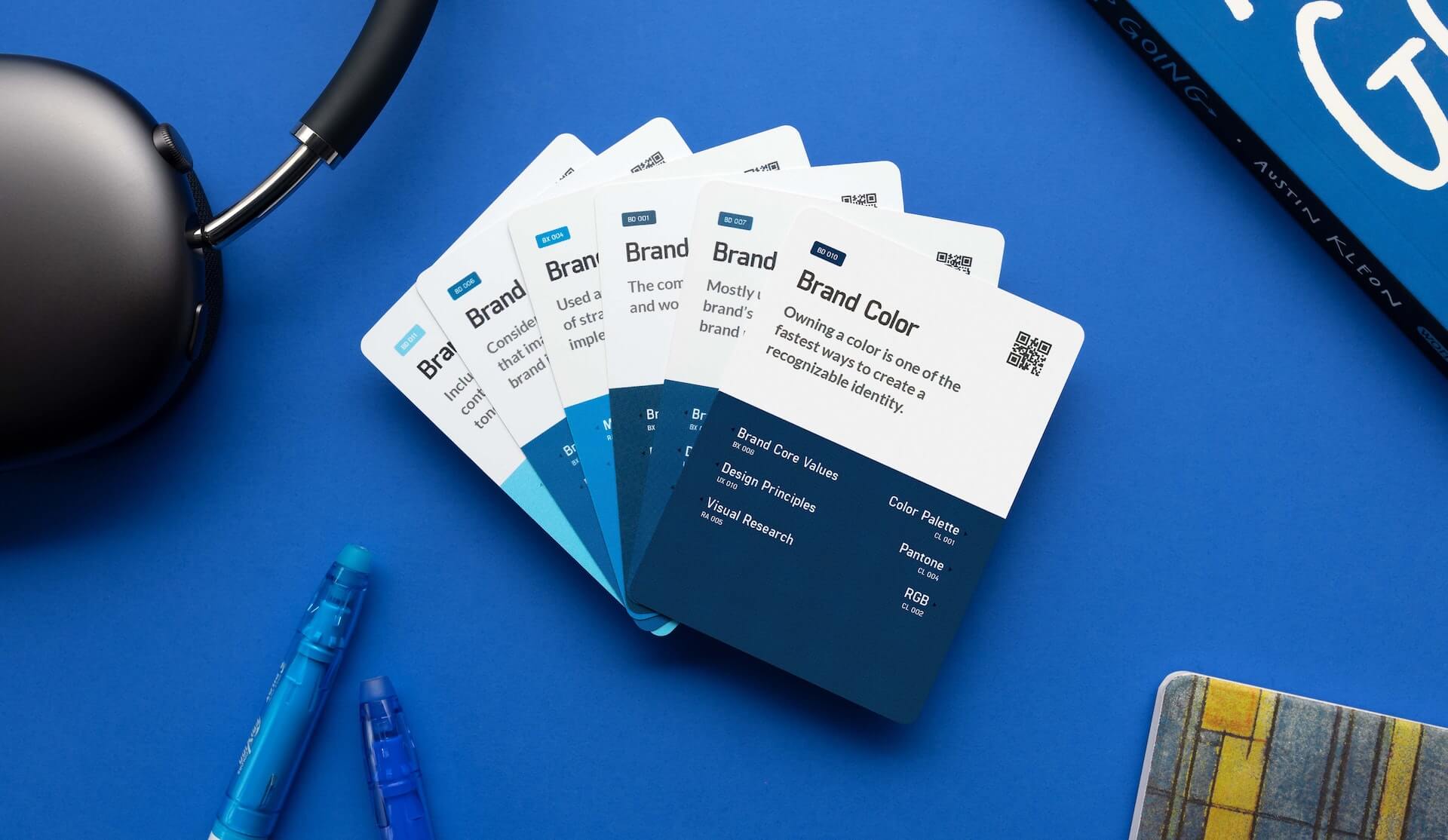When Should You Create a Brand Book?
Craft a brand book after nailing down your strategy. It aligns practical guidelines with your growth direction. Remember, it's a living document that evolves alongside market trends. Stay adaptable and keep your brand book up to date.
How to Create a Brand Book?
The more detailed, the better. Ensure your brand book is crystal clear for every employee. Before diving in, analyse the market and competition, define your brand, and identify your target customers. And don't forget to test the guidelines with a group of employees before putting them into action.
What Does a Brand Book Contain?
A brand book includes the brand’s bio (its history, mission, and values), a style guide (graphics usage instructions), and a description of tone and communication style.
Description of Tone and Communication Style
The brand book sets the tone and topics the brand wants to embrace while avoiding others. It clarifies messaging guidelines and acceptable forms of expression.
Furthermore, it outlines communication channels, particularly in the realm of diverse social media platforms. It encompasses guidelines for social media communication, including content publication, comment responses, hashtag usage, and more.
Style Guide and Its Elements
A style guide is a detailed manual for handling your brand's logo and typography.
LOGO GENESIS unveils the logo's backstory, significance in the brand's history and sources of inspiration, fostering a deeper grasp of its application principles.
PRIMARY LOGO VERSION defines the most used iteration of the logo, including the primary elements such as the logotype or symbol in both positive and negative versions on light and dark backgrounds, in vertical and horizontal orientations, enabling the use of both versions on various visual materials.
ALTERNATIVE LOGO VERSIONS provide the logo with the company slogan in monochromatic and achromatic versions, ensuring consistency in the company's brand identity across different promotional materials.
LOGO CONSTRUCTION precisely determines the size of logo elements and their relationships with each other, which matters when registering the logo with the Patent Office.
CLEAR SPACE AND MINIMUM SIZE describe the spaces around the logo that should remain untouched to ensure readability and consistency.
LOGO COLORS define the psychological meaning of selected colours and specify their codes in CMYK, RGB, Pantone, ORACAL, and RAL systems, enabling work on different media.
TYPOGRAPHY defines the selection of fonts in the company's branding, providing specific font types, including formatting styles (bold, italic, etc.), as well as sizing.
SCALING AND MINIMUM LOGO SIZES provide the minimum acceptable logo sizes for print (in millimetres) and screens (in pixels) to maintain readability for the primary logo version (vertical and/or horizontal) as well as the alternative versions.
LOGO USAGE IN DIFFERENT BACKGROUNDS defines how to use the logo on different backgrounds and specifies when to use it in colour, monochromatic, or achromatic versions.
PROHIBITED MODIFICATIONS specify the restrictions on logo usage, such as changing colours, proportions, adding extra elements, or using inappropriate backgrounds, along with examples.
EXPANDED BRAND BOOK defines any additional rules in accordance with your company's individual needs.
You can enhance your brand book with examples of corporate materials: showcasing sizes, fonts, creation process, and usage. It helps define essential visual identity and empowers your team to craft new materials accordingly.
Why are Brand Books and Style Guides Important?
When creating your company’s content, you likely use various resources, which can easily lead to visual chaos. A cohesive brand identity brings order to content creation, aligning employees, partners, and subcontractors. This clarity drives profitability through streamlined communication, faster project execution, and cost savings.

